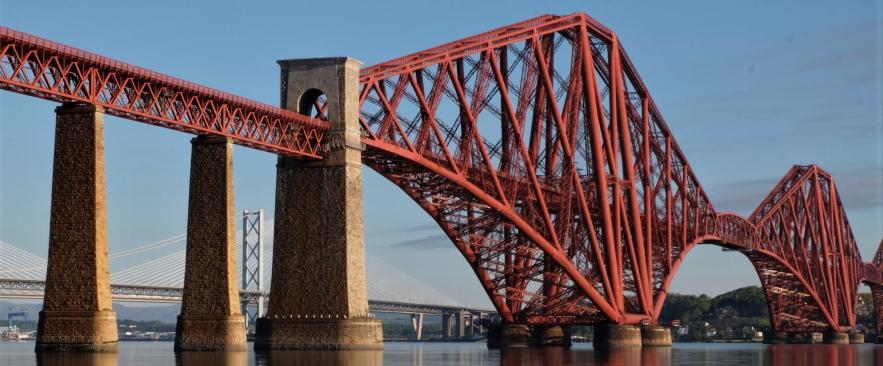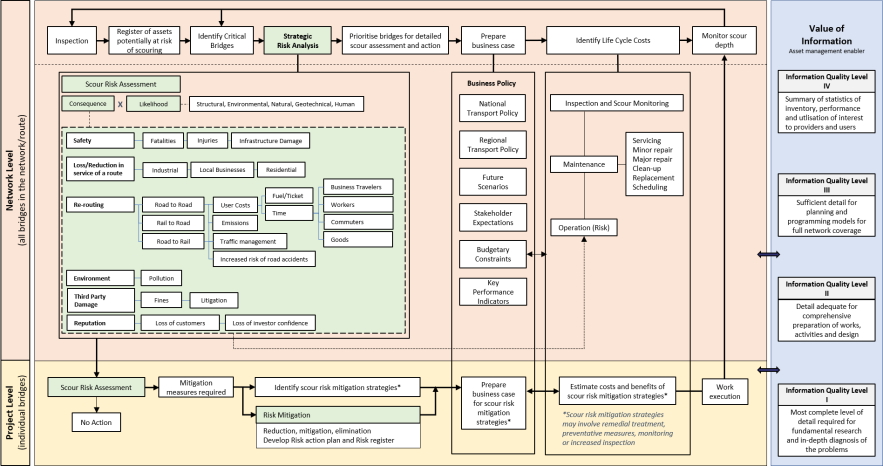
Our risk-informed framework enables economic appraisal of a bridge stock portfolio using a whole-life asset management approach to inform inspection programmes, prioritise preventive maintenance of bridges in areas of greatest failure risk, and identify cost-effective strategies to monitor and reduce risk.
Our risk-informed bridge management approach enables a whole-life appraisal of bridges and considers the impacts of bridge disruptions on the owners/managers of asset networks, the wider system, users, and the environment. The framework shows conceptually how risk management and better quality information can effectively support management planning for bridge scour at both network and asset- level. Scour is the removal of material from the bed and banks of a river by the action of water and is a major cause of bridge failure worldwide.
Business policies define what the network owner is aiming to achieve and are usually governed by stakeholder expectations, budgets and performance indicators among other targets. Risk management takes a holistic and systems view of infrastructure that requires consideration of several key elements beyond the physical bridge infrastructure. The significance of the risk depends on the combination of the likelihood of scour and the associated consequences. While the level of risk is governed by different scour contributing factors such as bridge geometry, location of the bridge on the river, material and depth of foundation, type of river bed material etc, the magnitude of the consequences is often mediated by the macroeconomic costs or impacts of related bridge disruptions.
Quantifying the performance of individual bridges supports asset managers and decision-makers to target their resources to the high-risk bridges on the network and also helps to make the business case for investing in predictive maintenance regimes. This approach also informs decision-making on the need for installing a scour monitoring system (or not) on a given bridge, and support selection of appropriate monitoring options if proven beneficial relative to the potential costs resulting from the absence of information.
Read more: Manu Sasidharan, Ajith Kumar Parlikad and Jennifer Schooling (2021). Risk-informed asset management to tackle scouring on bridges across transport networks, Structure and Infrastructure Engineering, DOI: 10.1080/15732479.2021.1899249

